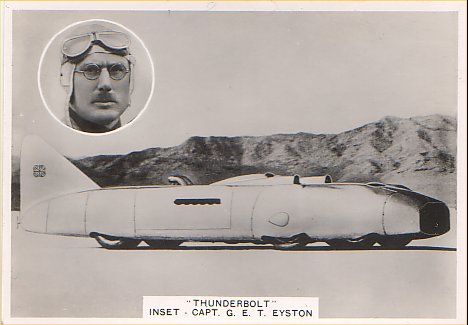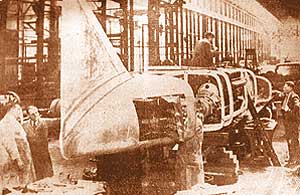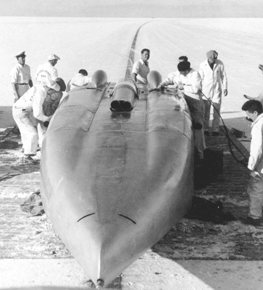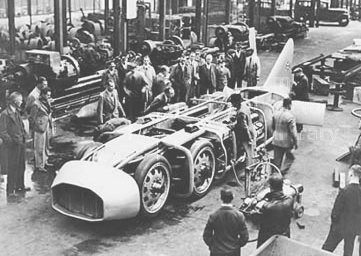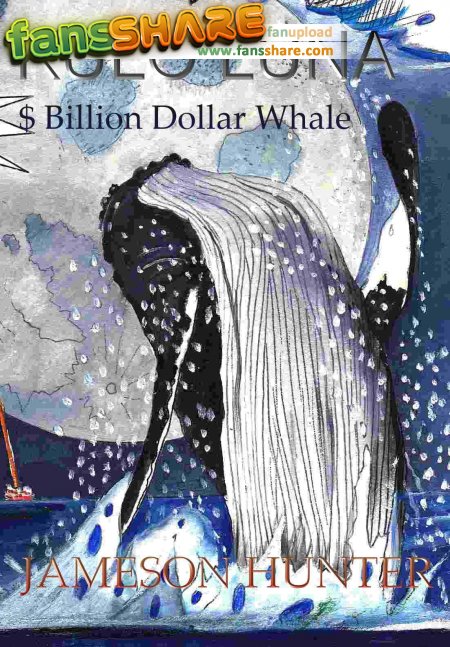|
GEORGE EYSTON
|
||||||||||||||
|
HOME | AUTOMOTIVE | BLUEPLANET | ELECTRIC CARS | ENERGY | INSURANCE | INDEX | SOLAR CARS |
||||||||||||||
|
For years George Eyston was locked in combat with fellow Brit John Cobb who favored lighter, more streamlined speed attempt vehicles. Cobb eventually emerged victorious nailing a 394mph record in 1947 that stood for more than a decade.
The massive eight-wheeled "Thunderbolt" never ran without having at least one tire deflate in the process. It is the biggest and heaviest car to ever set a record on the salt at Bonneville.
Captain George E T Eyston and Thunderbolt
THE LAND SPEED RECORD
THE PRESIDENT: Today, we have as our guest of honour, Captain George E. T. Eyston, M.C., an engineer, a lecturer and the holder of the world's land speed record. We are proud of the fact that he is British. We are thankful that thus far he has escaped permanent injury, although he does tell me he has bowled over a few telegraph poles and on one occasion had to "unload," when his machine was on fire and doing from sixty to seventy miles an hour.
Recently, Captain Eyston made a record on the Bonneville Flats in the State of Utah. He drove his car over the measured mile in 10.17 seconds, which is at the rate of 5.95 miles per minute and 357.5 miles per hour. At this rate of travel, Captain Eyston, if our highways permitted, could leave here and reach Oshawa in six minutes, Kingston in thirty minutes, and Montreal in fifty minutes.
Now, strange as it may seem, Captain Eyston's brother says that in traffic he is the most careful driver he ever saw and in fact is a snail.
I want to tell you something of the inconvenience the Captain has been put to in coming to speak to us. He promised last year that he would speak to The Empire Club but unfortunately he was taken ill and could not do so. This year I got in touch with him and he promised to come to Toronto if at all possible. To get here today he had to fly from Chicago leaving there last night at 12.30 and arriving at Buffalo this morning at five o'clock. He left Buffalo by air at ten o'clock and arrived here at eleven. That was so that he might keep his word to the Empire Club of Canada. Had the Captain been able to drive his "Thunderbolt" from Buffalo he would have arrived here in twenty minutes instead of the forty-five that it took to come by air.
Now, gentlemen, I might say we are not on the air today because of war news, but I would remind you of Captain Eyston's desire that you ask him any questions at the close of his address and he will answer them. I have, indeed, great pleasure in calling upon Captain Eyston to address our Club. Captain Eyston.
CAPTAIN GEORGE E. T. EYSTON, M.C.: Mr. President, Your Worship, His Reverence and Gentlemen: I am awfully glad to visit you today because, after all it is on the occasion of so very much better news, so far as the Empire is concerned. I always felt, having been through the last war from the start to the finish, that we couldn't possibly have another one, and I do think perhaps this is coming about, because it is inconceivable that people could be so silly these days; and it is really of historical importance, as you all know, that there can be such a momentous conference as is taking place today many thousands of miles away. I didn't come to talk to you about that but I couldn't help mentioning it.
The subject of my talk today is "The Land Speed Record"--the fastest ever travelled on land. It is a test of man and machine. To begin with the two runs have to be made in opposite directions and both of these runs have to be accomplished within a space of sixty minutes. This is the international rule governing this blue ribbon of records, the Land Speed Records.
Thunderbolt under build
Now you know this record is held at the present moment by the "Thunderbolt" which I planned and built and the present speed is 357.5 miles an hour or 575 kilometers an hour. The run in the northward direction was accomplished at 356.44 miles an hour and the run in the southward direction was made at 358.57 miles an hour. The difference in these speeds is attributable, I think, to the condition of the track at various points, but it is significant that the fastest speed record by the "Thunderbolt" this year on the memorable September 16 was 359.64 miles an hour-over the kilometer. That is, of course, in one direction, but it approximates to about one third of a mile short of 360 miles an hour which is the magic six miles a minute. It is only a hair's breadth, really, and a very small percentage of the whole and, as pronounced acceleration was noticeable on all runs through the measured distance on ever occasion, it is certain the car did for a few seconds exceed a speed of six miles a minute which, of course, is another milestone in the history of motoring. I am very glad to have been able to accomplish this with a British car. (Applause)
You remember that this event took place, as your President said, on the Bonneville Salt Flats, in Utah, a very long distance from here. It is a fantastic sight to see this large field of gleaming salt stretched far between the mountains of Western Utah and Nevada. Only a small portion of this salt-bed can be used for motor car records for the rest is soft salt and mud. When we arrived in July the whole place was flooded to about ten inches and it took ages for the liquid, as I would call it, to evaporate, owing to it being salt brine. Then we had to wait until the water level dropped several inches below the surface before the beds were hard enough to run on. It is important that they should be very dry in order that the powerful motors in the car can have sufficient grip to hurl the huge mass of the machine forward at over 530 feet per second.
To give you an idea of what speed really means, my large 44-inch diameter tires were revolving at 45 revolutions per second. Imagine the very largest wheel you have ever seen on a huge commercial vehicle and picture what it means for it to revolve at 45 revolutions while you count one.
On the salt bed which has to be carefully prepared by dragging, we paint one or more black lines along the whole length. These lines act as guides and prevent the driver straying; for errors of a few feet in steering might culminate in disastrous results. You see, you might drive a few feet away from the absolute straight line, something else might happen and you get a few feet more and, believe me, you will never get back.
The car is brought out over night from our little village of Wendover and deposited with all our paraphernalia under a large marquee on the desert. On the day of the record run we get up at one o'clock in the morning and drive several miles out to the marquee in the desert and commence heating the oil for the engine and transmission, and bolt on our racing wheels (eight in number) and when daylight appears we hope that there will be conditions of no wind and, of course, no rain. Just after dawn the car is pushed to the start and then we have to see whether the time-keepers are ready. I have to shut myself in the cockpit by means of closing the roof and then adjust the fresh air mask which has saved me on very many occasions. This mask, I would explain, is connected up by a small tube about three-quarters of an inch in diameter leading to the nose of the machine and therefore, of course, you readily understand fresh air is always available no matter what is happening in the cockpit. With two engines of a couple of thousand horsepower each there might be a considerable volume of carbon monoxide which wouldn't give you a second chance.
When the word is given that the course is clear the car is pushed off by a truck just to get it on the move and then the huge motors roar out their message of immense power. The car literally disappears down the course in a cloud of black smoke, because, in order to keep the temperature down on engines giving so much power, it is necessary to run with the mixture very rich and the exhaust smoke trails out in a long stream as the machine shoots forward. Undoubtedly, when going full out there is a trail of perhaps three and a half miles of this black smoke. Second gear is changed for top just under two hundred miles an hour. The mile posts start passing as if you were "running the hundred -yards" as we have large square boards indicating the number of miles from the start and the number of miles to pull up from the end of the measured distance. These boards are awfully important since you can soon lose track of where you are.
Thunderbolt being fueled - note the curve in the course
It must be remembered in connection with the "hundred yards" I have mentioned that the measured mile is covered in just over ten seconds. How many of you have run a hundred yards "in evens"? Well, the car does the mile in something like this or a trifle more. When going through the measured distance you are conscious of being encased in a projectile which nothing on earth will s' 'op, and it is just a matter, really, of shooting through space. That is, of course, unless something happens! And it is that fear of this "something happening" which tends to add to the real thrill, never to be forgotten.
As the car passes by, you "see the object," and the sound follows about half a mile behind which is the real thrill given to the spectators.
When you have got over this measured distance there comes the anxious problem of pulling up, for only six miles ahead of you there is a road and a railway at right angles to the track. There is the end of all things and you must come to a standstill. So you shut down the engines, quite gingerly, and after a pause the air brakes are shot out. These project on either side of the car. Of course there is no possibility of testing them beforehand so it is really a great thrill the first time you put out the air brakes, at 320, wondering whether they are still in the machine or whether the tail is being torn off. Because, generally speaking, people even in aircraft do not put out brakes at 300 miles an hour! It is not yet possible to apply the mechanical brakes. Therefore, one rushes on and on--of course, far faster than ever experienced before because no one else has done it! Toward the spot where a halt must be called or otherwise disaster must result.
At last the time has come when the mechanical brakes can be applied to the full and their wonderful power saves the day. You have got to sit looking at the revolution counter falling and the distance diminishing to where you have got to halt and you hope your brakes are going to work!
To go on all through the business of breaking the record and the actual driving would be much too long and technical so I will just say this, that I am satisfied that Great Britain has put the land speed record where it will be difficult to beat by anyone outside the country. (Applause)
"Thunderbolt" has two Rolls Royce motors of 2,000 horsepower each which are geared together. The car is 35 feet long and weighs nearly seven tons. We tried the bold experiment of removing the stabilizing fin during the last run and it was very thrilling to see what would happen at these great speeds of over 350 miles an hour without the assistance of this fin to keep the car straight. All was well, however, and the reason of course for taking off this fin was to eliminate the extra drag as we thought that we could do a better speed without it.
The car was built in the works at Wolverhampton in England on a large table over which there was a huge crane. It was all accomplished in eight months, and well do I remember every day of it, since I hardly slept a wink. We got out to America in the late autumn of 1937 and took the Land Speed Record from "Bluebird" at 312 miles an hour and the fastest speed record last year was 319, which we thought was absolutely terrific!
Well I'm awfully glad to be permitted to address the members of the "Empire Club of Canada," and also those friends of the Dunlop Company and C. C. Wakefield, whose branches are out here and whose parent firm has helped me so much in this great record. I can't tell you, Mr. President, how much I value your looking after me and all the arrangements that have been absolutely superb. I am sorry that I didn't sleep last night-that was my fault. After the record there were many things I had to do, both business and otherwise and it has been necessary to resort to flying about.
As your President has said I shall be very glad indeed to answer any questions you may like to put to me, always reserving, of course, the right to refuse to answer those I don't like! You might like to know something particular about the car and its performance and what we did.
In conclusion may I say again how splendid it is to be with you here. It is the first time I have been in Canada. I have been very close many times but it was literally impossible to make it. I do hope that the international situation will clear up and that we shall go to our beds tonight with the assurance that for some time to come at any rate the sky will be clear, because I think we all have one common aim and that is peace. If people don't want peace, let them stand back, because as far as I know, a war today, as it will be, will only lead to complete misery, and everybody knows this, so we hope it will be averted.
May I thank you all for bearing with me all this time. I hope I have succeeded in interesting you and may I wish you all "the very best."
(Applause-prolonged) THE PRESIDENT: I am sure we have all listened to Captain Eyston with a great deal of admiration admiration of his skill, of his iron nerve, and of his modesty.
On the way in I was asked if I would ask Captain Eyston to tell us what effect driving the measured mile northward and the measured mile southward and the subsequent few miles before he may be liable to strike disaster, had on his physical condition and also upon his nerves? Is that one of the questions you prefer not to answer?
Thunderbolt at the factory
CAPTAIN EYSTON: I don't mind at all. I would certainly like to answer your questions. As far as physical condition is concerned, of course, it is necessary to go into a certain amount of training. It isn't a long distance event, but at the same time one does abstain from drinking and smoking to as great a degree as possible and you must go into this-I am back on this record-with all the wits you can muster. As regards the strain imposed on the mind I think that is far greater than the physical strain. The machine is sometimes difficult to control. The gear shift, the clutch and the brake are all very stiff and it requires all one's strength to operate the machine. Therefore, one has to build oneself up to be sufficiently strong to accomplish this. As regards the strain in the event, the harassing part is having to stop at the far end and wait while the wheels are being changed and check up the car generally just to see that nothing is broken. This has to be done in a tremendous hurry and the car has to be torn more or less to pieces to get the wheels off and on again, all in the space of twenty-five minutes, and there is the anxiety that there has been something missed out. The best part is when it is all over!
THE PRESIDENT: Now, gentlemen, the floor is yours. You have the Captain at your mercy. I hope you are not going to be backward. The Captain, I have found from my short association with him, is a charming man and I asked him--I was going to say hundreds but it is more like a thousand questions--coming down from the air field this morning, so he knows what to expect from Canadians.
MR. WARREN B. HASTINGS: How should a car be handled by the driver when it goes at cruising speed on the road, and when the driver enters a curve and realizes that the car is becoming unstable-what should he do? If he goes into a curve too fast or a tire bursts what should he do?
CAPTAIN EYSTON: First, I would suggest that the owner of the car purchase tires that don't burst! But it is a very difficult thing with one wheel on the rim when taking a curve because there is a tremendous drag accruing from that and you simply can't get away from it. Low geared steering would help tremendously, in being able to get a mechanical advantage in turning the wheel which is so sticky, but the fact that the car heels over adds to the difficulties. The best thing is to go straight on. Just as when anything happens in an aeroplane when you are taking off and the motor stops. The thing is to go straight on. It doesn't matter whether there is a brick wall or anything else, the best thing is always to go straight on. That is what I recommend if anything happens on a curve when you are in trouble.
QUESTION: May I ask what was the petrol consumption at the greatest speed reached?
CAPTAIN EYSTON: At the maximum speed it was consuming about one gallon a mile.
MR. HARRISON SMITH: I want to ask a question. What kind of gas did you use?
CAPTAIN EYSTON: Entirely out of order. (Laughter)
MR. MILES: I would like to ask just how gingerly the Captain takes his foot off the accelerator after the measured mile.
CAPTAIN EYSTON: As you will appreciate when it is covering a mile at the rate of just over 10 seconds you must be very quick about the business of closing the throttle; otherwise too much ground is covered. At the same time it is impossible to slam the throttle close because of the reversal stresses, but it is essential to draw it back slowly and make sure it is really closed. That would be a tremendous danger if, by accident, the throttle wasn't more or less completely closed because you want the full braking power of the engine. Should it be opened ever so slightly, then you have made a miscalculation.
QUESTION: What is the construction and performance of the tire?
CAPTAIN EYSTON: All the tires are made at Fort Dunlop in Birmingham, England, and they are sent over in cases, some mounted on wheels. All tires are hand made. There is very little rubber, about a millimeter, but it is a very remarkable fact that even going 10 or 12 miles at a speed, 50% of which is at maximum speed, the rubber has hardly been abraded at all.
With regard to the performance of the tires it is quite obvious that these tires have to be tested on special machines at the factory, driven by electric motors on rollers and loaded to capacity which they will be required to undertake on the actual record. All these tests are made until a perfect article is produced.
MAYOR RALPH DAY: Mr. President, it is said when a golf club hits a ball (when it is driven by the President of this Club), it becomes a sphere and is no longer round. I wonder whether that tremendous centrifugal force enlarges the tire.
CAPTAIN EYSTON: Yes, it is bound to enlarge the tire and the casing will be deformed quite appreciably and assume another shape. All the time it is called upon to flex because, if you will realize, the wheel is revolving at 45 revolutions while you count one and there are certain reflexes the tire has to perform. It is truly remarkable that it can do anything of the sort and transmit 1,000 horsepower at the same time.
MR. F. B. FETHERSTONHAUGH, K.C.: I would like to say I had the pleasure or whatever you call it, of driving the first car in Canada. Our speed was 12 miles an hour. It has rather increased I see by what the speaker has said. There has been a very great increase from 12 miles an hour to 357. I think it shows a rather big advance.
CAPTAIN EYSTON: Thank you very much, sir.
MR. L. CRAWFORD BROWN: Mr. Chairman, several years ago when the late Sir Henry Seagrave made his, record, and on the occasion when he failed to stop it was found that his brake linings were molten metal on the wheels. This has obviously been eliminated. What effect has the run and the braking on the brake linings?
CAPTAIN EYSTON: I understand in the past burning has taken place-the linings have been completely changed and further the brakes were rendered absolutely useless ,by heat. All this has been gone into most thoroughly during the course of the last few years. The brakes on my car are especially designed for the purpose. They are disk brakes which automatically cool themselves with the result that I have twice the braking area of a normal brake and the linings are in firstclass condition at the finish.
MR. FRASER: Mr. President, may I ask a question? I was in the army the same as Captain Eyston. The Captain said that the greatest thrill that the spectators had was in seeing the car half a mile ahead of the sound--would the Captain explain to us what was the thrill he had?
CAPTAIN EYSTON: The greatest thrill I had was when I finished the record.
MR. WARREN B. HASTINGS: What is the potential speed of "Thunderbolt" as computed by Captain Eyston and what is the topmost land speed in his opinion?
CAPTAIN EYSTON: Well, both these questions are difficult to answer. It is purely a matter of conjecture, and I think the less said the better. So far as "Thunderbolt" is concerned it certainly could go faster.
With regard to the maximum possible on land 1 think a tremendous amount of development work will have to be done to reach 400 miles an hour. Certainly we are quite a long way off yet. I think we will have to be content with six miles a minute.
THE PRESIDENT: Gentlemen, our time is up. You have heard enough from the President for one day. His Worship, the Mayor, has very kindly said that he will extend your thanks to Captain Eyston.
MAYOR RALPH DAY: Mr. President, Captain Eyston and Gentlemen: When we were informed at the City Hall a few days ago that Captain Eyston would be here to speak to the Empire Club, it was our pleasure to immediately make some arrangement for a civic reception at the City Hall. It is only because of the fact that the Captain is spending such a very short time in Toronto and Canada that those arrangements have not been filled. I therefore take very much pleasure on behalf of the members of this Club present and on behalf of my fellow citizens of the City of Toronto of welcoming him to Toronto, of wishing him continued success, and expressing the most earnest wish that we will see him again next year if not earlier, at which time I think he will, unquestionably, be here to talk of 357 miles an hour as a record made in the past and not the record then standing.
Sir, we do very, very much appreciate that out of an extremely busy life you have found time to come to Toronto to address this meeting and on behalf of the members of this Club and my fellow citizens it is my duty as well as my very great pleasure to thank you. (Applause)
UK VEHICLE INSURANCE ONLINE
A - Z DIRECTORY of MOTOR MANUFACTURERS
A heartwarming adventure: Pirate whalers V Conservationists, with an environmental message. For release as an e-book in 2013 with hopes for a film in 2015 TBA (graphic design: Martin House)
|
||||||||||||||
|
BIOLOGY | BOOKS | FILMS | GEOGRAPHY | HISTORY | MUSIC | SOLARNAVIGATOR | SPORT | UTOPIA |
||||||||||||||
|
This
website is copyright © 1991- 2013 Electrick Publications. All rights
reserved. The bird logo Max Energy Limited is an educational charity. |
